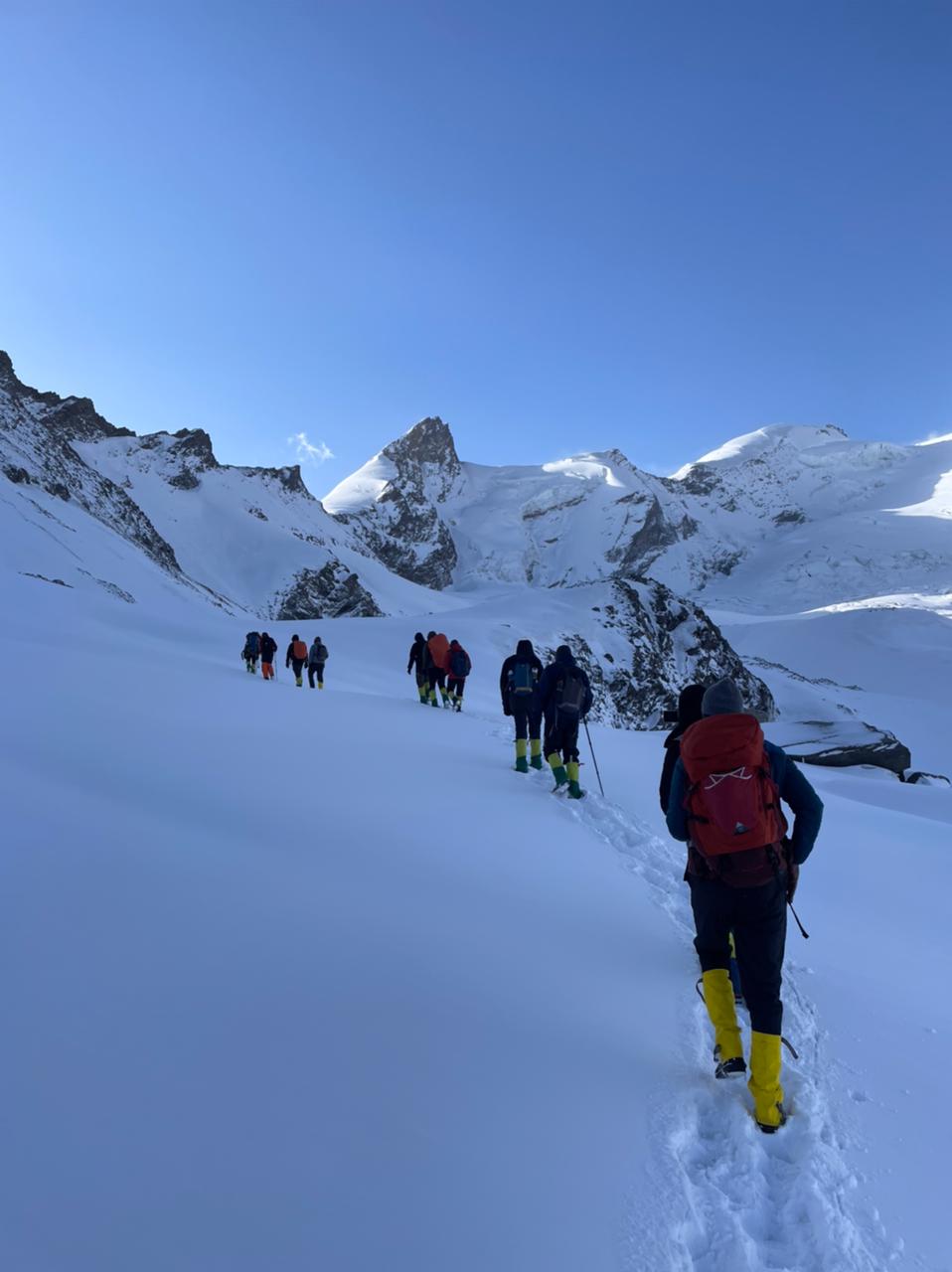
Everest Base Camp Trek (Helicopter Return)
9 Days
65 Km
18,225 FT
18+
Difficult
The Everest Base Camp Trek with Helicopter Return is an exhilarating adventure that combines the classic trekking experience to the base of the world's highest mountain with a luxurious and time-saving return by helicopter. This trek takes you through breathtaking landscapes, iconic Sherpa villages, and ancient monasteries, all while offering mesmerizing views of Everest, Lhotse, Nuptse, and Ama Dablam. The journey begins in Kathmandu, followed by a thrilling flight to Lukla, the gateway to the Khumbu region. As you ascend, you'll pass through Phakding, Namche Bazaar, Tengboche, Dingboche, and Lobuche, before reaching the legendary Everest Base Camp (5,364m). After conquering the trek and witnessing the stunning sunrise from Kala Patthar (5,545m), a scenic helicopter ride takes you back to Lukla or Kathmandu, offering a bird's-eye view of the mighty Himalayas.
This trek is perfect for adventure enthusiasts who seek the thrill of reaching Everest Base Camp without the long descent. It balances the challenge of high-altitude trekking with the comfort and convenience of a quick and scenic helicopter return. With experienced guides, comfortable tea house accommodations, and well-planned acclimatization days, this trek ensures a safe and unforgettable experience in the heart of the Himalayas.
Why This Trek?
- Experience Everest in Less Time: The helicopter return saves 3-4 days of trekking, making it ideal for those with limited time.
- Avoid Trekking Fatigue: Descending can be exhausting; a helicopter ride ensures a comfortable and hassle-free return.
- Breathtaking Aerial Views: Witness the Khumbu Glacier, Everest Base Camp, and the Himalayan peaks from above, a once-in-a-lifetime experience.
- Thrilling Adventure & Luxury Combined: Enjoy the excitement of trekking while indulging in the luxury of a helicopter ride back.
- Best of Both Worlds: Immerse yourself in local Sherpa culture, monasteries, and high-altitude landscapes, followed by a smooth, quick return.
Included/Excluded
Select Dates
Guest in maximum
BOOK NOWBook With Confidence
Itinerary for
Everest Base Camp Trek (Helicopter Return)
Day 1
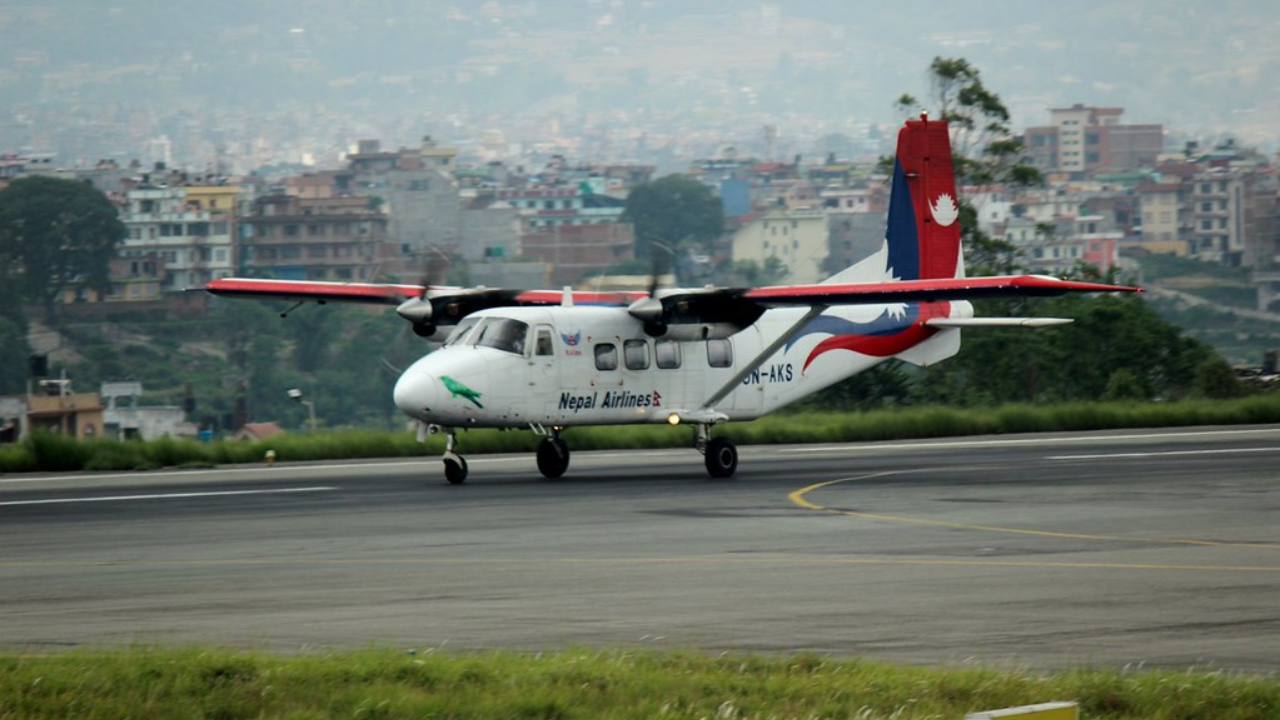
Day 2
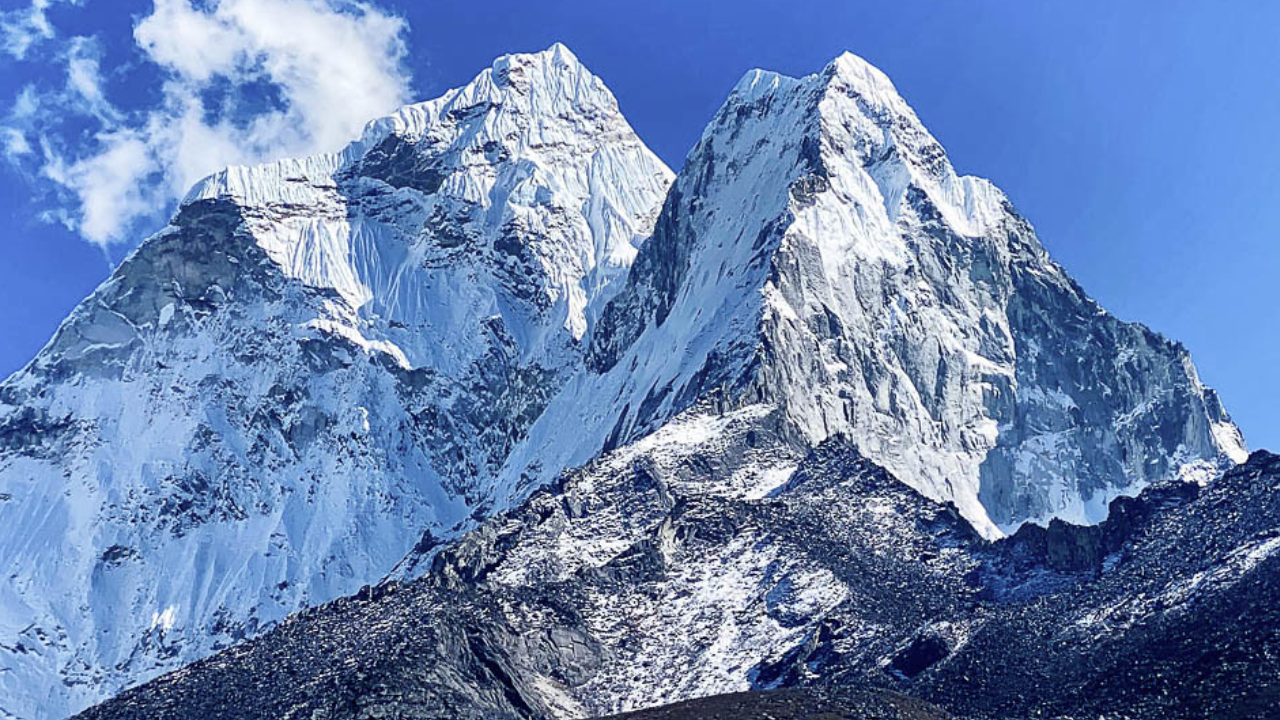
Day 3
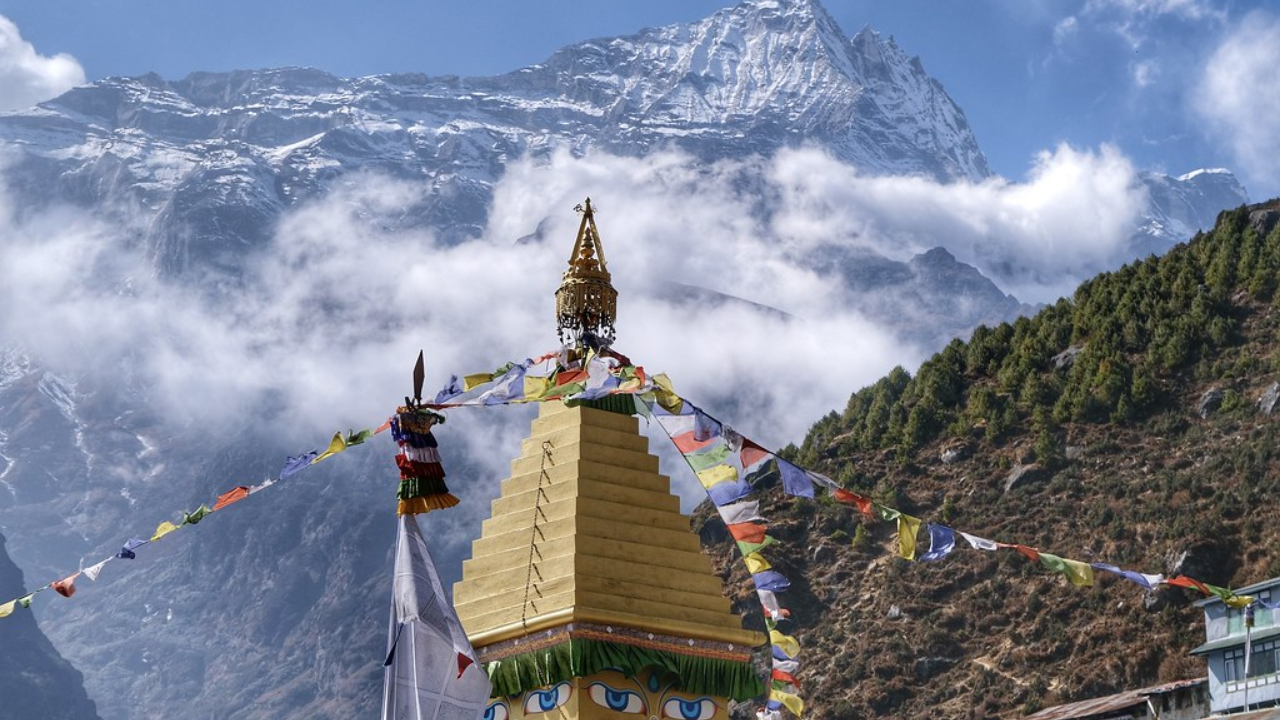
Day 4
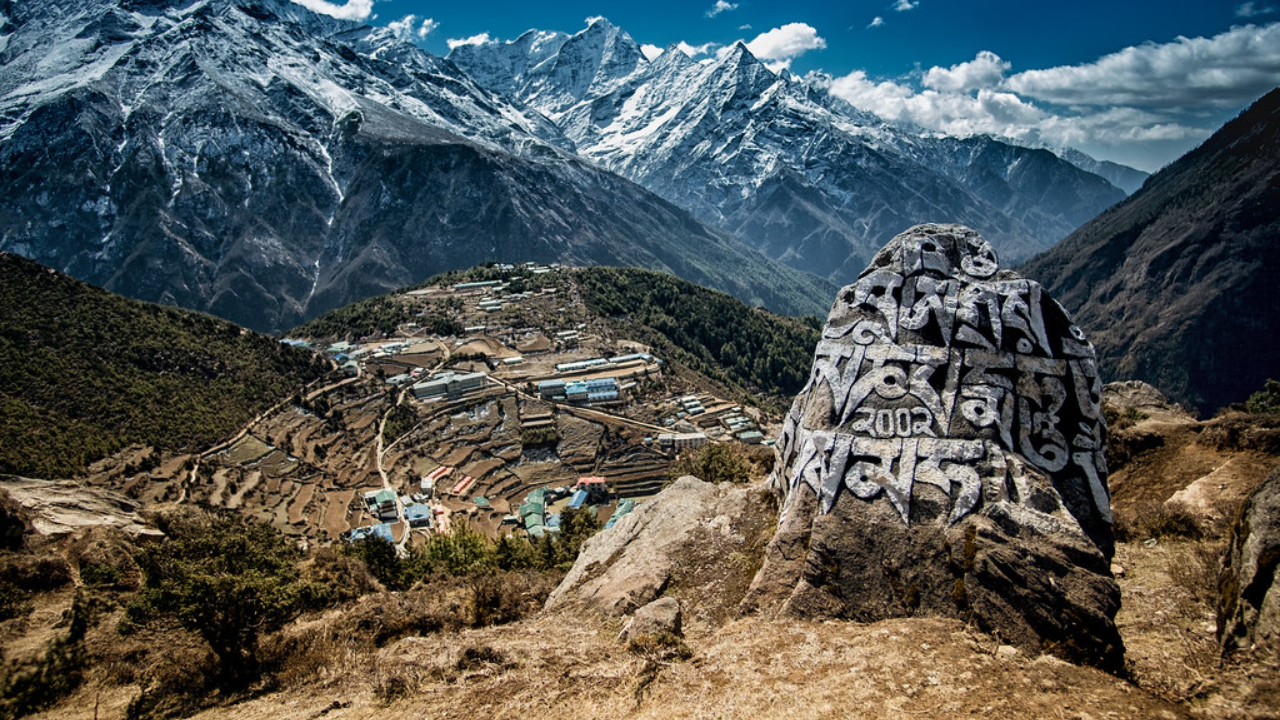
Day 5
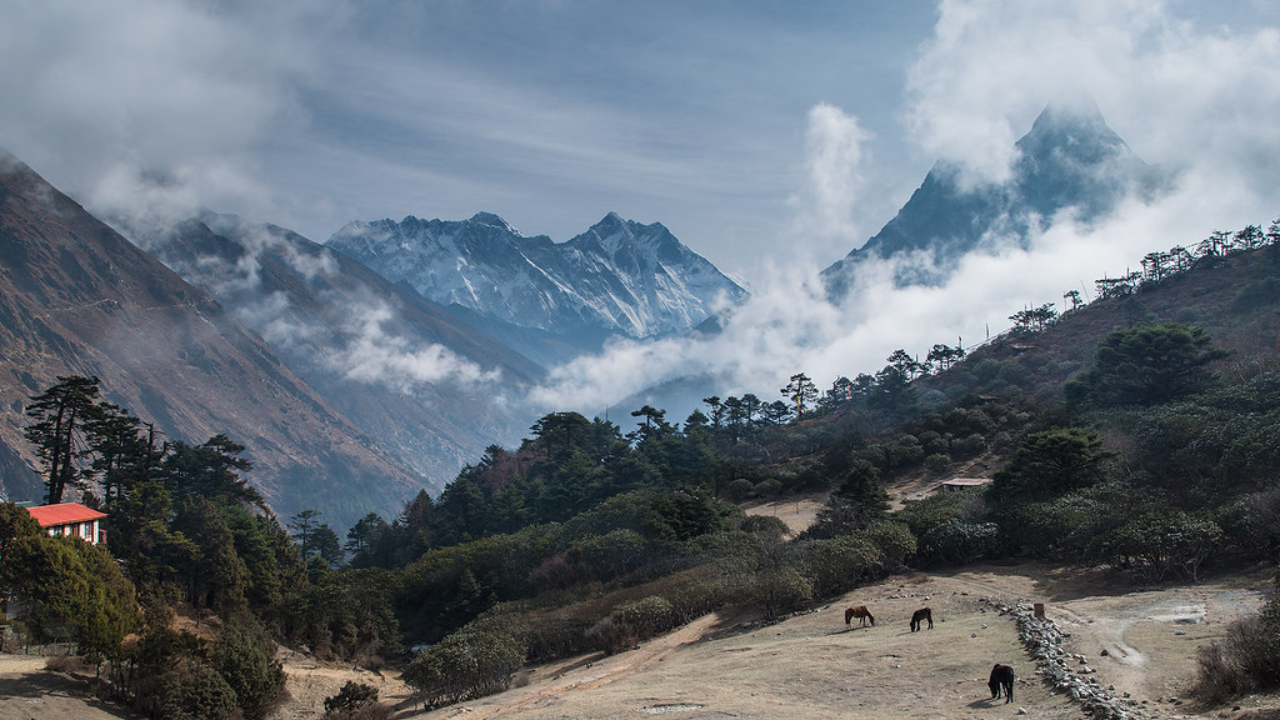
Day 6
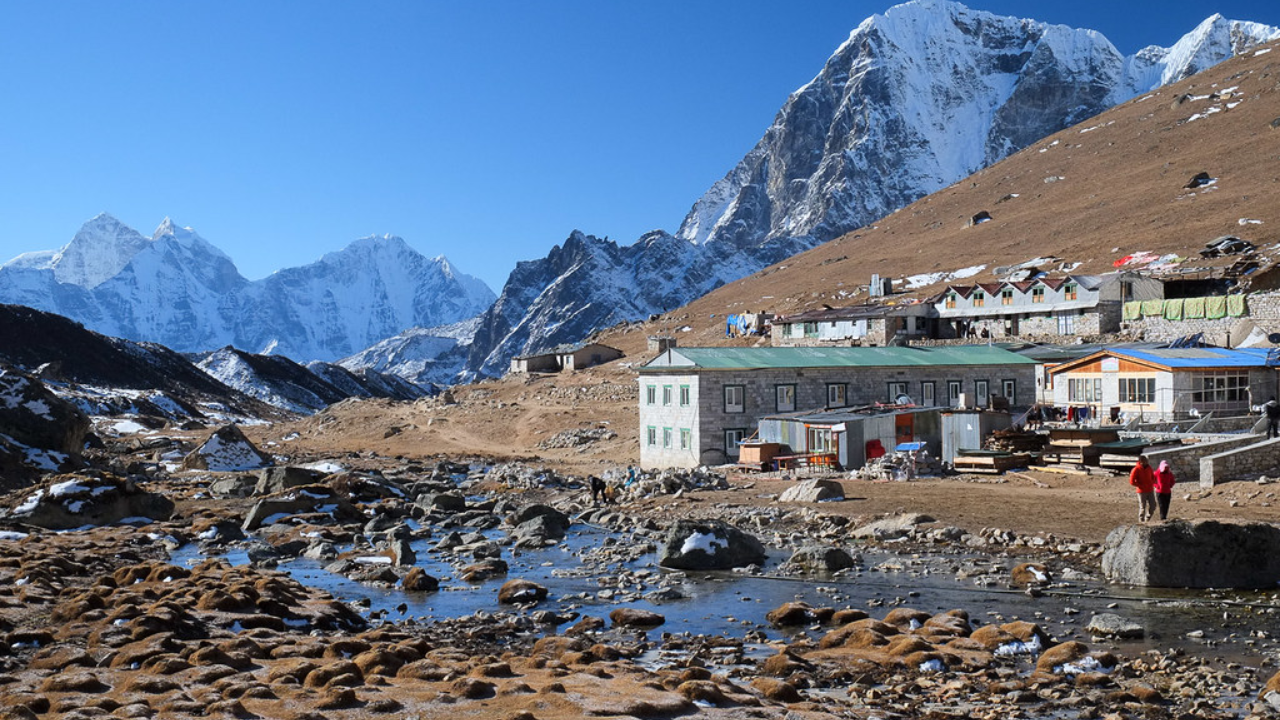
Day 7
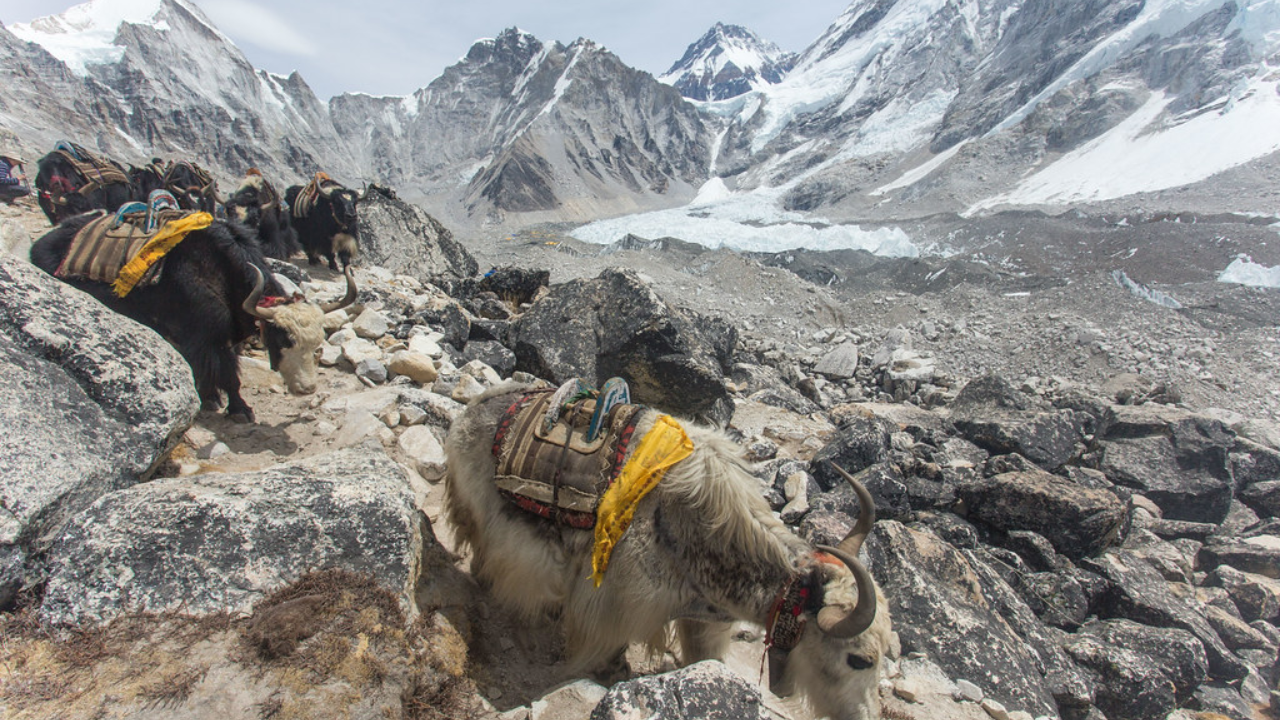
Day 8
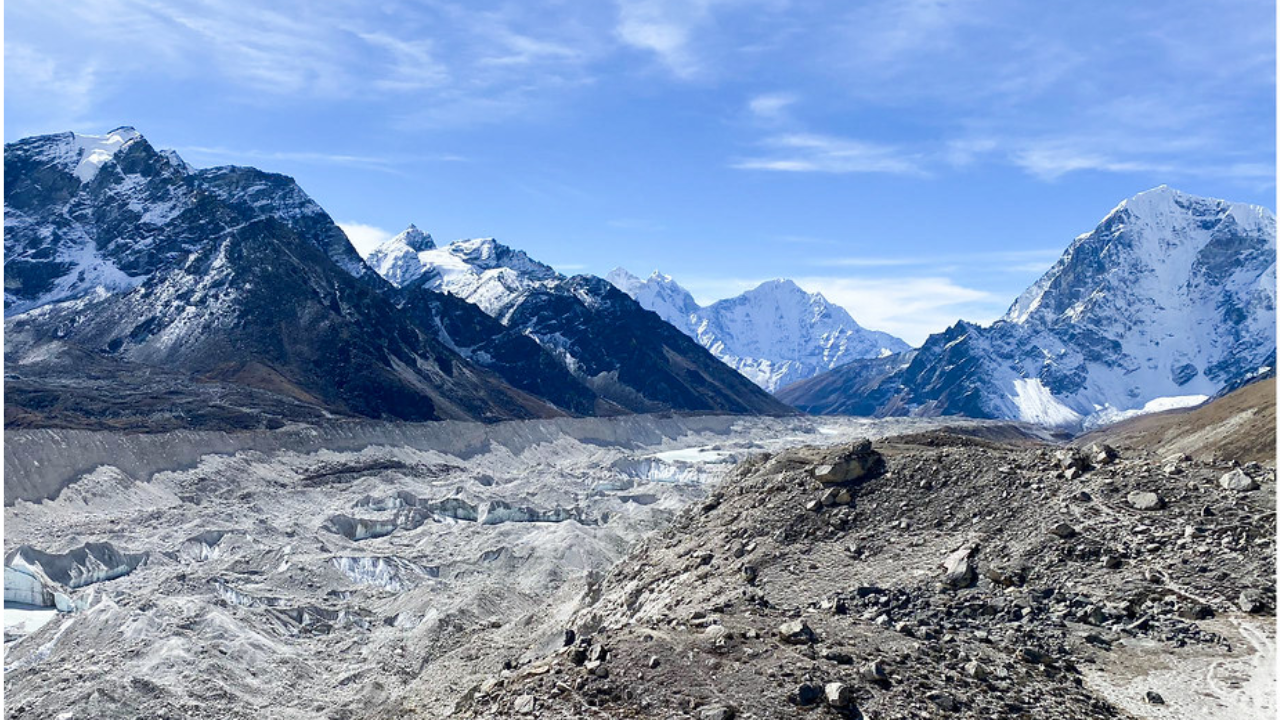
Day 9
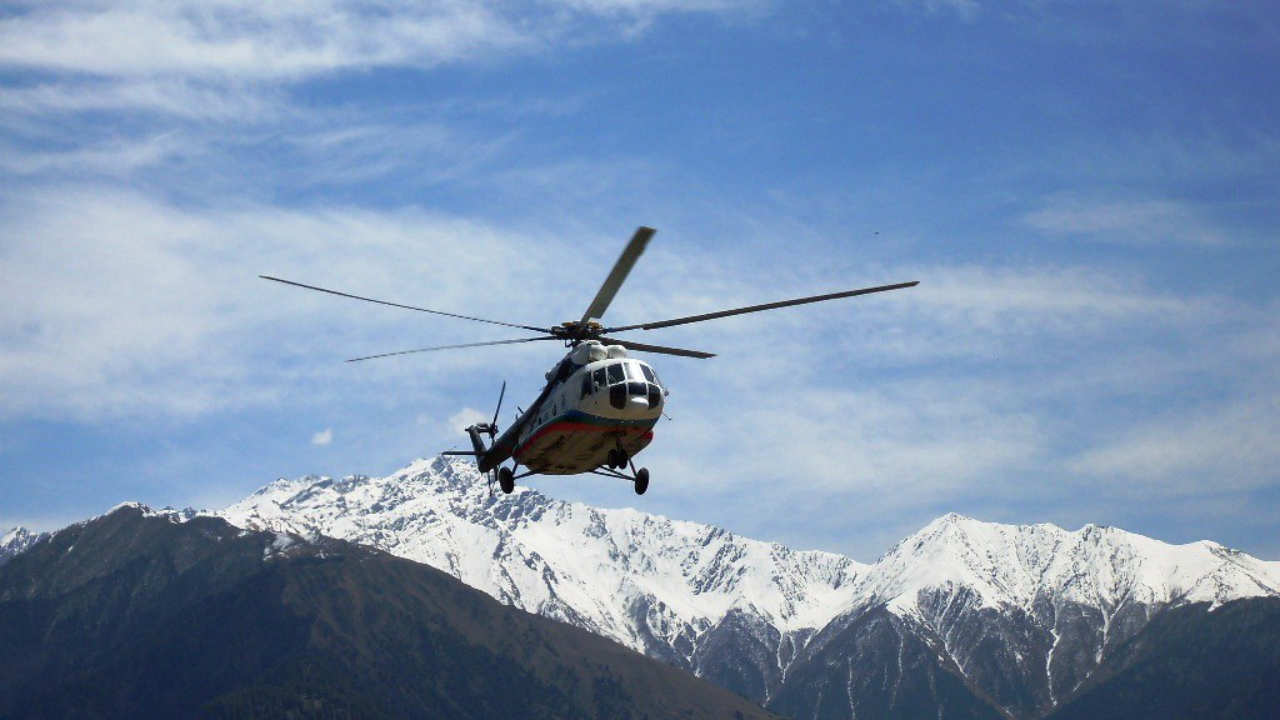
Complete Everest Base Camp Trek (Helicopter Return) Information
-
Kindly ensure you pack a warm jacket in your cabin bag for your flight from Delhi to Kathmandu.
-
Recommended to reach Kathmandu before 2 PM
-
While we are dedicated to providing our best services, please understand that this is a wilderness environment, and we will need your cooperation and support.
-
Our trek leaders are certified search and rescue mountaineers and liaison officers (volunteers) for the Indian Mountaineering Foundation of the Government of India. This trip has been meticulously planned and will be executed under their guidance to ensure everyone's safety.
The best time to visit Everest Base Camp with a helicopter return is during spring (March to May) and autumn (September to November). These seasons offer stable weather, clear skies, and moderate temperatures, making the trek safer and more enjoyable. Spring is particularly stunning as the trails are lined with blooming rhododendrons and vibrant alpine flowers, creating a colorful contrast against the snow-capped peaks. With daytime temperatures ranging from -6°C to 15°C, trekkers can experience pleasant weather while enjoying breathtaking views of Everest. In contrast, autumn provides crisp, post-monsoon air and excellent visibility, making it another ideal period for trekking. The daytime temperatures range from 5°C to 15°C, but nights can be colder. Autumn is also culturally rich, with festivals like Mani Rimdu in Tengboche, allowing trekkers to witness the unique traditions of the Sherpa community.
While winter (December to February) offers pristine snowy landscapes and fewer crowds, temperatures can drop as low as -25°C, making the trek challenging. Heavy snowfall and strong winds can lead to flight cancellations and limited accessibility to higher-altitude tea houses. Similarly, the monsoon season (June to August) is not recommended due to heavy rains, muddy trails, and frequent Lukla flight disruptions. The cloudy weather also obscures mountain views, reducing the overall experience. For the best conditions, spring and autumn remain the most favorable times, offering the perfect blend of adventure, safety, and breathtaking scenery.
Traveling from India to Kathmandu, Nepal, is convenient and offers multiple options, including flights, road trips, and train connections. Here’s how you can reach Kathmandu from different parts of India:
By Air (Fastest & Most Convenient Option)
The easiest and fastest way to reach Kathmandu from India is by direct flight. Tribhuvan International Airport (TIA) in Kathmandu is well-connected with major Indian cities like Delhi, Mumbai, Kolkata, Bangalore, and Varanasi. Major airlines such as Air India, Nepal Airlines, and IndiGo operate regular flights, with Delhi to Kathmandu being the most frequent route (approx. 1.5-hour flight).
By Road (Budget-Friendly & Scenic Option)
If you prefer a road trip, you can travel from India to Nepal by bus or private vehicle via the following border crossings:
- Sunauli-Bhairahawa (from Gorakhpur, Uttar Pradesh) – The most popular and well-connected route.
- Raxaul-Birgunj (from Patna, Bihar) – Another major entry point with train connectivity.
- Panitanki-Kakarbhitta (from Siliguri, West Bengal) – Ideal for travelers from East India.
- Banbasa-Mahendranagar (from Uttarakhand) – Suitable for those from North India.
- Daily Delhi-Kathmandu luxury buses operate via Gorakhpur-Sunauli, taking about 24-30 hours to reach Kathmandu.
By Train + Road (Cheapest Option)
- There is no direct train from India to Kathmandu, but you can take a train to Gorakhpur (UP) or Raxaul (Bihar) and then continue by road.
- From Gorakhpur, take a bus or shared taxi to the Sunauli border, then another bus to Kathmandu (7-8 hours).
- From Raxaul, cross the border into Birgunj, then take a bus/taxi to Kathmandu (6-7 hours).
Pack smart, trek safe!
Ensure you're prepared for every adventure with this essential checklist of gear and supplies. Whether you're a beginner or a seasoned trekker, the right equipment makes all the difference. Download checklist's pdf here
Basic Gear
| Backpack with Rain Cover | (40 - 50 ltr) Comfortable Shoulder Straps |
| Day pack with Rain Cover | 20 - 30 ltr (If off-load opted) |
| Walking stick | Advisable (At least one) |
| Water Bottle / Hydration pack | 2 Bottles(1 liter each), Hydration Pack 1 (Pack) + Bottle |
| Small size tiffin/lunch box | 1 Nos |
| Snacks | Energy bars, dry fruits, electral/ors |
| Personal Medical Kit | Consult your doctor |
Clothing
| T-Shirt (Synthetic quick dry) | 1 Full & 1 Half sleeves |
| Fleece T-shirt | 1 Nos |
| Wind stopper / Fleece jacket | 1 Nos |
| Windproof Jacket | 1 Nos |
| Down feather / Hollow jacket | 1 Nos |
| Thermal inner (Upper and Lower) | 1 Nos |
| Trek Pant (Synthetic quick dry) | 1 Nos |
| Wind stopper / Fleece Pant | Not required |
| Waterproof gloves | Not required |
| Fleece / woollen gloves | 1 Pair |
| Poncho / waterproof Jacket and pant | 1 Nos |
Head Gears
| Head torch | 1 Nos. (Avoid Hand torch) |
| Sun cap | 1 Nos. (One that covers the neck as well) |
| Woolen cap | 1 Nos. |
| Balaclava | Not required |
| Buff / Neck-gaiters | 1 Nos |
| Sunglasses | UV with dark side cover, People who wear spectacles - (A)- Use contact lenses | (B)- Photo chromatic glasses |
Foot Gears
| Trekking shoes | 1 Pair (Waterproof, high ankle with good grip) |
| Floaters / flip-flops | 1 Pair |
| Cotton socks | 6 pairs |
| Woollen socks | 1 pairs |
| Gaiters | 1 Pair (TTH provides when required) |
| Micro spikes | 1 Pair (TTH provides when required) |
Personal Utilities
| Sunscreen cream | 1 Nos |
| Moisturiser | 1 Nos |
| Chap-stick / Lip balm | 1 Nos |
| Toothbrush and toothpaste | 1 Nos |
| Toilet paper & Wipes | 1 Nos |
| Soap / hand sanitizers | 1 Nos |
| Antibacterial powder | 1 Nos |
| Quick dry towel | 1 Nos |
At Scoutripper, we understand that plans can change. You can reschedule your booking up to 24 hours before your experience begins. Changes are subject to availability and any applicable price adjustments. Rest easy knowing your adventure is flexible!
At Scoutripper, we value flexibility but also adhere to clear cancellation guidelines:
- Full Refund: Cancel at least 6 full days before the experience starts.
- 50% Refund: Cancel between 2 and 6 full days before the start time.
- No Refund: Cancellations made less than 2 full days before the experience start time will not be refunded.
Additionally:
- Changes are not accepted less than 2 full days before the experience begins.
- Cut-off times are based on the local time of the experience.
- Some experiences require a minimum number of participants. If the minimum isn’t met, you’ll receive a full refund or the option to reschedule.
Enjoy peace of mind with our clear and transparent policies!
Drinking Water:
-
Available at tea houses where you stay.
-
Carry at least 2 liters for daily trekking.
-
Refill at tea houses along the way (except at higher altitudes).
-
Gorakshep: You must buy drinking water (NPR 350 per liter).
Mobile Network & Internet:
-
Mobile network available till Dole.
-
Internet connectivity at most tea houses, except Labouche.
-
Indian SIMs (Airtel, Vodafone, Idea) work with international roaming where there is a network.
-
Local SIM options: N Cell & Nepal Telecom (available in Kathmandu/airport).
Electricity & Charging Points:
-
Charging is available at tea houses (but expensive).
-
Charging cost: NPR 1,000 per charge (increases at higher altitudes).
-
Carry a high-capacity power bank to reduce costs.
FAQs about
Everest Base Camp Trek (Helicopter Return)
The best time is spring (March to May) and autumn (September to November) when the weather is stable, skies are clear, and temperatures are moderate. These seasons offer the best trekking conditions and scenic views.
The trek is moderate to challenging, requiring good physical fitness. While no technical climbing is needed, trekkers must be prepared for steep ascents, high altitudes, and long trekking hours.
Everest Base Camp sits at 5,364 meters (17,598 feet), while the highest point trekkers reach is Kala Patthar at 5,545 meters (18,192 feet), offering the best panoramic view of Everest.
After reaching Everest Base Camp and Gorak Shep, trekkers take a helicopter ride back to Lukla or Kathmandu, avoiding the need for a long descent. This option is perfect for those with time constraints or wanting a luxurious experience.
Yes, altitude sickness is a risk due to high elevations. Proper acclimatization days in Namche Bazaar and Dingboche, staying hydrated, and trekking at a steady pace help reduce the chances of altitude-related issues.
Trekkers stay in tea houses or lodges, which provide basic but comfortable rooms. The food includes local Nepali dishes (dal bhat), noodles, soups, momos, pasta, and even some Western options.
Trekkers need two permits: the Sagarmatha National Park Permit and the Khumbu Pasang Lhamu Rural Municipality Permit, both of which are checked at various points along the route.
Essential items include warm clothing, waterproof gear, sturdy trekking boots, gloves, sunglasses, sunscreen, a sleeping bag, and altitude sickness medication. A lightweight backpack and trekking poles are also useful.
While the trail is well-marked, hiring a licensed guide helps with navigation, local insights, and altitude safety. A porter can carry heavy bags, allowing trekkers to enjoy the journey without excess strain.
Yes, travel insurance covering high-altitude trekking and emergency helicopter evacuation is strongly recommended. This ensures safety in case of altitude sickness, injuries, or unexpected weather conditions.


